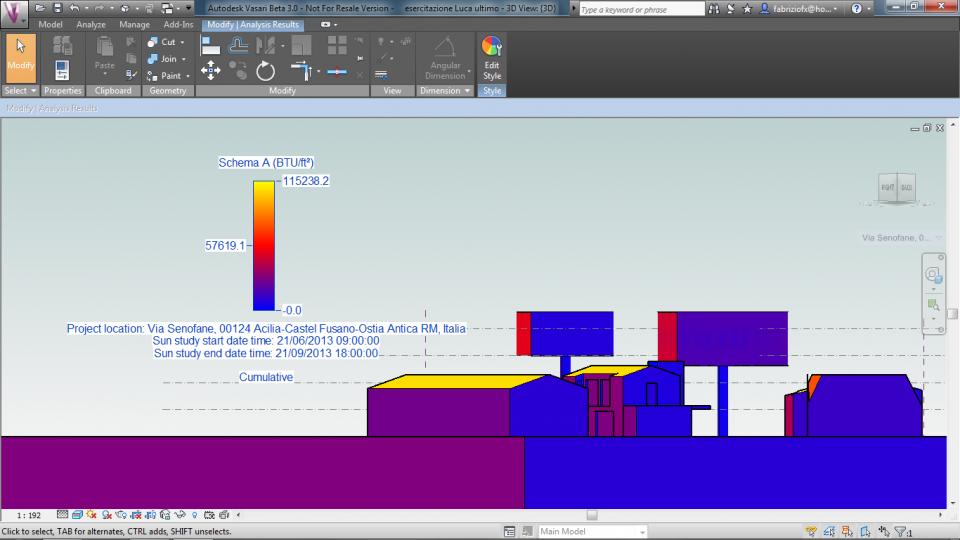In this second tutorial we will proceed with the analysis of solar radiation. This will lead us to make observations and assessments on buildings taken into consideration, by understanding the behavior at different times of the year. So we will see how the orientation of the dwelling and therefore its exposure more or less favorable to be two key elements of the design .
Compared to the previous delivery where we had developed the simple volumes and had observed the areas of shadow and light in this one having to do ' more accurate analysis I proceeded with greater definition of the town by modeling and defining balconies, overhangs and other openings particular we can observe.
Of course all this was done for a reason .
With this definition in the model we can observe that there are areas with different periods of alternating or changing their irradiation , and , most importantly , we can see that there are parts where the sunlight never reaches it during the " summer " in that it "winter" . This shows us that there are always cold areas in our house and this peculiarity may generate problems such as mold or deposits.
The periods under analysis are from June 21 to September 21 from 9.00 to 18.00
And from December 21 to March 21 from 9.00 to 18.00
First step: definition of the model.
In this picture we can see the definition in greater volumes. we have defined what are the balconies and windows, which are the projections, the trees that screen. In the next step we will understand how important these details.

We can see the roofs of the plant and its orientation.
This image shows the analysis for the period 21 June September 21
Once the improved definition of the house goes to give a thickness to the soil where it poses in such a way that it can also receive radiation.
clicking the box Analyze open a series of commands. what interests us is in the upper right corner and is called Solar Radiation.
clicking it opens a window that asks us the information.
then proceed to define the analysis time by placing the double-date.
Once you have chosen the time, I had the June 21 and 21 September, and defined the time 9:00 to 18:00 we can proceed with the selection of the area indicated.


In this picture we can see the plant covers during winter taken in analysis that goes 21 to 21 September






SUMMER
In these last two images we can see a comparison between these two preriodi under analysis.
WINTER
I chose these two in particular because it shows very well that in the south-west of the house under the balcony that serves the rooms we can see that there are walls that do not change or change in any way the radiation in the two periods under analysis are those blue that define the angle of the house one on the right is slightly different in summer and winter while the other remains the same.

















